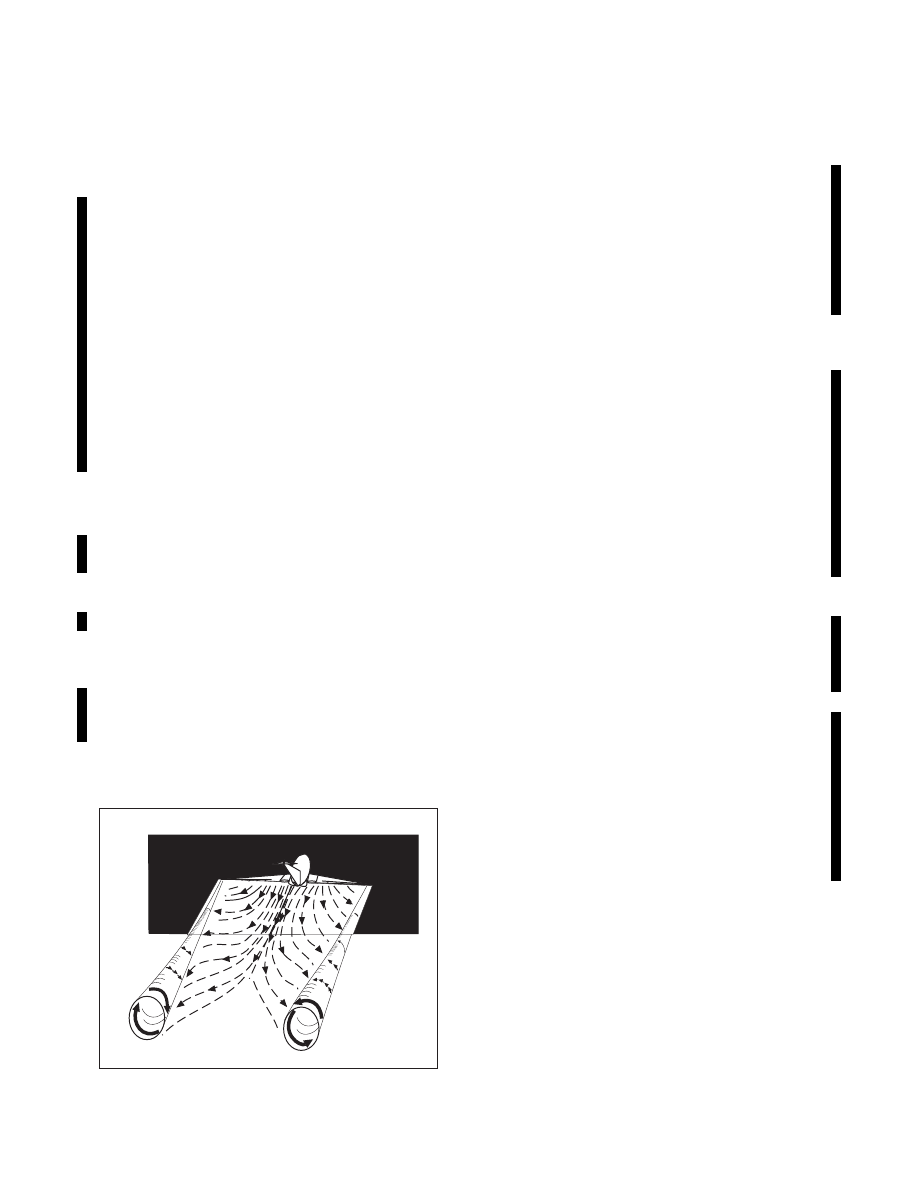
AIM
8/15/19
7
−
3
−
1
Wake Turbulence
Section 3. Wake Turbulence
7
−
3
−
1. General
a.
Every aircraft generates wake turbulence while
in flight. Wake turbulence is a function of an aircraft
producing lift, resulting in the formation of two
counter
−
rotating vortices trailing behind the aircraft.
b.
Wake turbulence from the generating aircraft
can affect encountering aircraft due to the strength,
duration, and direction of the vortices. Wake
turbulence can impose rolling moments exceeding
the roll
−
control authority of encountering aircraft,
causing possible injury to occupants and damage to
aircraft. Pilots should always be aware of the
possibility of a wake turbulence encounter when
flying through the wake of another aircraft, and adjust
the flight path accordingly.
7
−
3
−
2. Vortex Generation
a.
The creation of a pressure differential over the
wing surface generates lift. The lowest pressure
occurs over the upper wing surface and the highest
pressure under the wing. This pressure differential
triggers the roll up of the airflow at the rear of the
wing resulting in swirling air masses trailing
downstream of the wing tips. After the roll up is
completed, the wake consists of two counter
−
rotating
cylindrical vortices. (See FIG 7
−
3
−
1.) The wake
vortex is formed with most of the energy concentrated
within a few feet of the vortex core.
FIG 7
−
3
−
1
Wake Vortex Generation
b.
More aircraft are being manufactured or
retrofitted with winglets. There are several types of
winglets, but their primary function is to increase fuel
efficiency by improving the lift
−
to
−
drag ratio.
Studies have shown that winglets have a negligible
effect on wake turbulence generation, particularly
with the slower speeds involved during departures
and arrivals.
7
−
3
−
3. Vortex Strength
a.
Weight, speed, wingspan, and shape of the
generating aircraft’s wing all govern the strength of
the vortex. The vortex characteristics of any given
aircraft can also be changed by extension of flaps or
other wing configuring devices. However, the vortex
strength from an aircraft increases proportionately to
an increase in operating weight or a decrease in
aircraft speed. Since the turbulence from a “dirty”
aircraft configuration hastens wake decay, the
greatest vortex strength occurs when the generating
aircraft is HEAVY, CLEAN, and SLOW.
b. Induced Roll
1.
In rare instances, a wake encounter could
cause catastrophic inflight structural damage to an
aircraft. However, the usual hazard is associated with
induced rolling moments that can exceed the
roll
−
control authority of the encountering aircraft.
During inflight testing, aircraft intentionally flew
directly up trailing vortex cores of larger aircraft.
These tests demonstrated that the ability of aircraft to
counteract the roll imposed by wake vortex depends
primarily on the wingspan and counter
−
control
responsiveness of the encountering aircraft. These
tests also demonstrated the difficulty of an aircraft to
remain within a wake vortex. The natural tendency is
for the circulation to eject aircraft from the vortex.
2.
Counter control is usually effective and
induced roll minimal in cases where the wingspan
and ailerons of the encountering aircraft extend
beyond the rotational flow field of the vortex. It is
more difficult for aircraft with short wingspan
(relative to the generating aircraft) to counter the
imposed roll induced by vortex flow. Pilots of short
span aircraft, even of the high performance type, must
be especially alert to vortex encounters.
(See FIG 7
−
3
−
2.)